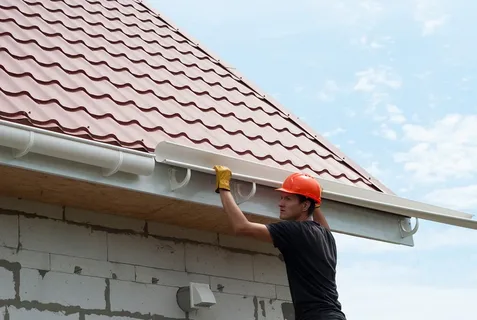A strong and reliable roof is one of the most important parts of any home or commercial property. It protects the structure from harsh weather, improves energy efficiency, boosts curb appeal, and increases property value. Whether you’re building a new home or replacing an old or damaged roof, professional roofing installation ensures long-lasting performance and peace of mind. In this blog, we’ll explore why quality roofing installation matters, what the process includes, and how to choose the right roofing contractor for your project.
Why Professional Roofing Installation Matters
Many homeowners underestimate the importance of expert installation and focus only on the roofing materials. While choosing the right shingles or metal panels is essential, proper installation is what truly determines the roof’s durability. Incorrect installation can cause major issues such as leaks, poor ventilation, sagging, and premature wear and tear.
Working with trained and certified roofing professionals ensures that:
-
Your roof is installed according to local building codes
-
High-quality materials are used correctly
-
Proper ventilation and insulation are included
-
The entire system works together for maximum protection
-
You receive manufacturer warranties and workmanship guarantees
An expertly installed roof can last decades, saving you from constant repairs and expensive replacements.
Types of Roofing Materials Used in Modern Installations
Today’s roofing industry offers a wide range of materials to match different styles, budgets, and climate needs. The most common options include:
1. Asphalt Shingles
Affordable, versatile, and available in many colors, asphalt shingles remain the most popular roofing choice. They are easy to install, durable, and suitable for most weather conditions.
2. Metal Roofing
Metal roofs—such as steel, aluminum, or copper—offer exceptional longevity, energy efficiency, and fire resistance. They can last over 50 years with minimal maintenance.
3. Tile Roofing
Clay and concrete tiles provide a classic, elegant look. They are incredibly durable and perform well in hot climates; however, they require a strong roof structure due to their weight.
4. Flat Roofing Systems
Commercial buildings often use TPO, EPDM, or modified bitumen systems. These roofs are designed for energy efficiency and leak prevention on low-slope surfaces.
5. Wood Shakes or Shingles
These provide a natural and rustic appearance. While beautiful, they require regular maintenance to prevent moisture and insect damage.
Choosing the right material depends on your budget, climate, architectural style, and long-term goals.
The Roofing Installation Process: What to Expect
Professional roofing installation follows a detailed step-by-step process to ensure safety, precision, and long-term strength.
1. Initial Inspection & Consultation
A roofing expert will inspect your current roof, identify damage, check underlying structures, and discuss your preferred materials and budget.
2. Roof Removal & Preparation
If you are replacing an existing roof, the old materials must be removed. The contractor will examine the decking for rot or weak spots and make repairs before installing the new roof.
3. Installing Underlayment
A moisture barrier or underlayment is installed to protect your home from water damage. This layer improves insulation and prevents leaks during heavy rain or storms.
4. Adding Flashing & Ventilation
Flashing is installed around chimneys, vents, skylights, and edges to prevent water intrusion. Proper ventilation is also added to control moisture and extend roof lifespan.
5. Installing Roofing Material
Your chosen roofing material is installed carefully following manufacturer guidelines. Whether shingles, tiles, or metal panels, precision is essential for durability and weather resistance.
6. Final Inspection & Cleanup
Once the installation is complete, the contractor inspects the entire roof, ensuring every layer is secure. They also remove debris and leave your property clean.
Benefits of a Properly Installed Roof
A correctly installed roof offers long-lasting advantages for both homes and commercial buildings:
-
Leak Protection: Strong sealing and proper flashing reduce the risk of water damage.
-
Energy Efficiency: Good insulation lowers heating and cooling costs.
-
Safety: Eliminates risks of structural damage, mold, and roof collapse.
-
Increased Property Value: A new roof instantly improves curb appeal and boosts resale value.
-
Lower Maintenance Costs: Quality installation reduces the need for constant repairs.
A roof is more than a protective layer—it is a long-term investment in comfort and security.
Choosing the Right Roofing Contractor
The success of your roofing installation depends heavily on the contractor you choose. Always look for:
-
Licensed and insured professionals
-
Experience with your roofing materials
-
Transparent pricing and detailed estimates
-
Positive reviews and references
-
Warranty on both materials and workmanship
Avoid choosing based on the lowest price alone. Instead, focus on quality, experience, and reliability.
Final Thoughts
Roofing installation is a major project that requires skill, planning, and the right materials. Whether you’re upgrading an old roof or building a new structure, working with professionals ensures your roof stands strong for years. A well-installed roof not only protects your property but also enhances energy efficiency, beauty, and value.

